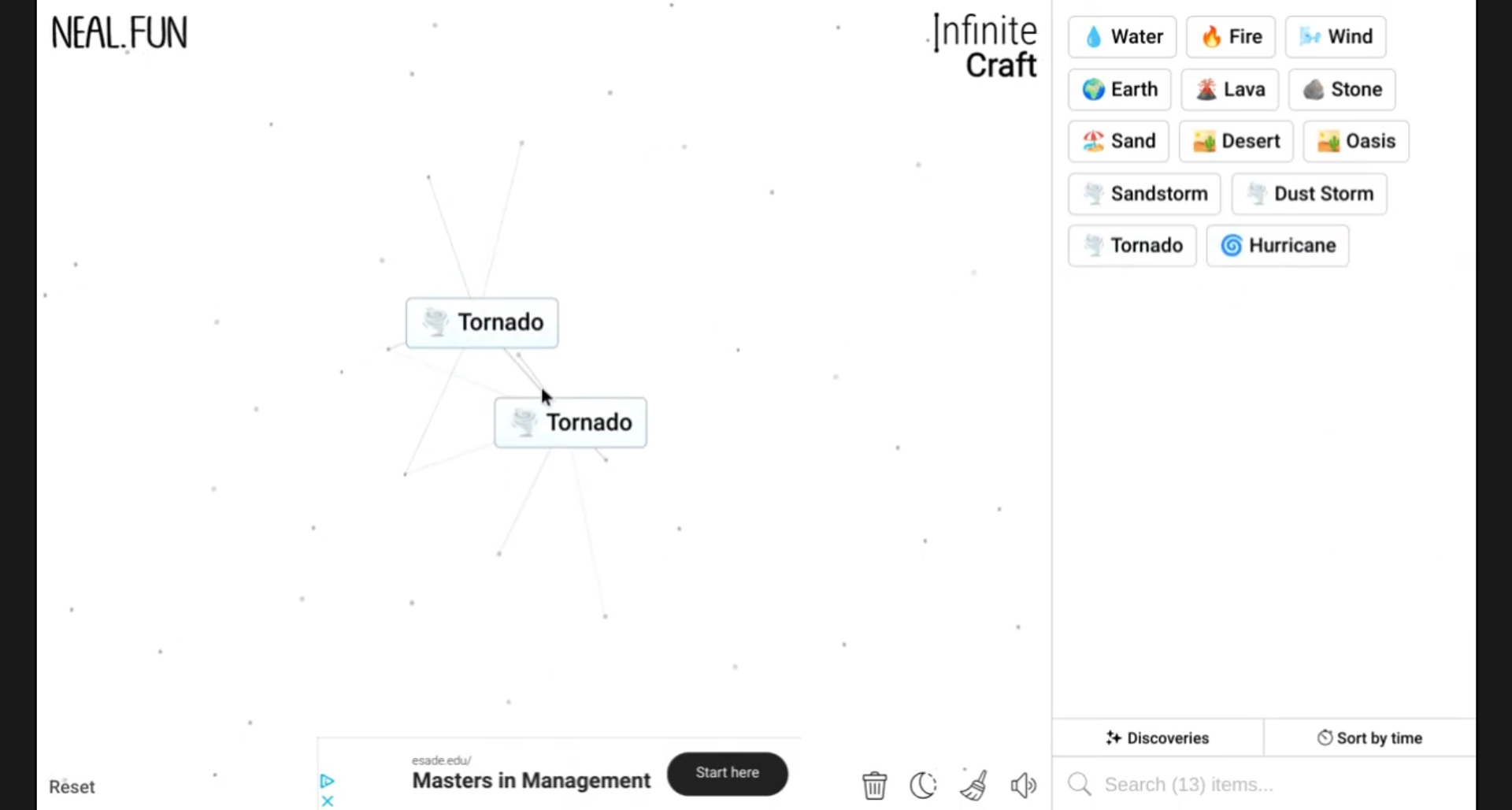When diving into the realm of crafting, one may often confuse knowledge with wisdom. Wisdom in craft transcends mere technical skill; it embodies a depth of understanding drawn from experiences, emotional insights, and ethical considerations. This richness deeply enhances the crafting process and creates a meaningful journey for both the crafter and the audience.

In this article, we will explore how to make wisdom in infinite craft, focusing on the fusion of creativity and skill. Infinite craft refers to the ability to continuously adapt and innovate across various crafting disciplines, fostering a landscape where every project is an opportunity for growth. Let’s delve into this fascinating journey of acquiring craftsmanship wisdom through various strategies and insights.
Understanding Wisdom
Components of Wisdom
Wisdom is a mosaic of various components:
- Knowledge vs. Experience: Knowledge is about understanding concepts, while experience is the hands-on application of that knowledge. In crafting, knowing how to execute a technique is essential, but experiencing the outcomes—both good and bad—forms true wisdom.
- Emotional Understanding and Empathy: Crafting is often a reflection of personal emotions and experiences. Developing emotional intelligence helps crafters connect more deeply with their work and the audience. This connection can lead to more meaningful creations.
- Moral Judgment and Ethical Considerations: Wisdom also involves making choices that align with personal values. Engaging thoughtfully in the crafting community and respecting materials and their sources contribute significantly to moral judgment.
The Role of Reflection
To truly understand how to make wisdom in infinite craft, reflection becomes key.
- Importance of Self-Reflection: Reflecting on personal crafting experiences allows crafters to identify areas of growth. Questions like “What have I learned from this project?” enrich understanding.
- Techniques for Effective Reflection: Crafters can use journaling, meditation, or peer discussions as tools for deep reflection. These practices encourage mindfulness and help in recognizing patterns in successes and failures.
Cultivating Wisdom in Craft
Engaging with Different Craft Forms
Exploring diverse crafts—such as woodworking, textiles, and pottery—broadens skill sets and deepens wisdom. Each craft form introduces unique techniques and patterns of thinking.
- Exploring Various Crafts: Trying different forms can spark inspiration and ignite creativity. Craftspeople often find that skills from one discipline enhance another.
- Benefits of Interdisciplinary Learning: By merging ideas across different crafts, crafters develop innovative solutions and a more well-rounded craftsmanship.
Learning from Mistakes
Failure is often labeled a stepping stone to success. Embracing failure as a learning opportunity can boost wisdom in crafting.
- Embracing Failure: Having a growth mindset means viewing setbacks as lectures from life rather than end points. Recognizing what went wrong allows a crafter to improve.
- Case Studies: Consider the story of a potter who produced several flawed bowls before discovering the perfect technique. These failures ultimately shaped their unique style.
Seeking Mentorship and Collaboration

Two heads are often better than one. Finding mentors in the crafting community can significantly enhance your knowledge and wisdom.
- Benefits of Mentorship: Mentors can provide insight from their own journeys, helping crafters avoid common pitfalls.
- Collaboration: Working with other crafters fosters shared wisdom and encourages the exchange of creative ideas.
Incorporating Mindfulness and Intuition
The Role of Mindfulness
Integrating mindfulness into crafting is a powerful way to deepen wisdom.
- Benefits of Mindfulness: Practicing mindfulness promotes presence during the crafting process, enhancing the overall experience.
- Mindfulness Exercises: Craftspeople can engage in breathing exercises or focused attention on a craft project to cultivate a mindful state.
Trusting Your Intuition
Craftsmanship often requires one to tap into their intuition. Understanding the balance between skill and intuition is crucial.

- Balancing Skills and Intuition: While technical skills are vital, trusting one’s gut feelings can lead to unique creations.
- Techniques to Cultivate Intuitive Skills: Engage in free-form crafting sessions where the goal is not perfection but discovery.
Creating a Personalized Wisdom Framework
Setting Intentions for Crafting
Importance of Having Clear Goals: Crafting without direction can feel aimless. Having intentions fosters focus and purpose in craftsmanship.
- Strategies for Setting Intentions: Use SMART goals (Specific, Measurable, Achievable, Relevant, and Time-bound) to develop clear crafting intentions.
Documenting Your Crafting Journey
Keeping a record of experiences enhances the learning curve. Utilizing feedback from self-reflection and peers is essential for growth.
- Keeping a Journal: Documenting thoughts, techniques, and progress offers a practical means to venture forth wisely.
- Embracing Feedback: Feedback, whether positive or negative, offers opportunities to learn and adapt.
Sharing Your Wisdom
Teaching Others
The Impact of Teaching: Teaching is not merely sharing knowledge; it reinforces your wisdom as well.
- Methods for Teaching Crafts Effectively: Use a variety of teaching styles (visual, auditory, kinesthetic) to cater to diverse learning preferences of your students.
Contributing to the Crafting Community
Engaging with the crafting community is vital. Sharing experiences and insights can inspire others and foster growth.
- Engaging with Communities: Whether online or offline, joining crafting groups or forums enhances camaraderie and resource sharing.
- Sharing through Blogs and Social Media: These platforms allow crafters to document their journeys, share insights, and offer inspiration.
Conclusion
The Lifelong Journey of Crafting Wisdom
The pursuit of wisdom in crafting is an evolving journey, one full of learnings and unexpected surprises. It is essential to continually seek knowledge, reflect on experiences, and integrate this understanding into practice.
Call to Action
Now that we’ve explored how to make wisdom in infinite craft, we encourage you to embark on your crafting journey. Start setting intentions today, identify the crafts you wish to explore, and actively engage with your community. Here are a few first steps:
- Choose a new craft form to explore.
- Create a journal to document your progress.
- Find a mentor or join a crafting group.
Recommended Resources
Books and Articles
- Goodreads: A platform for discovering books related to crafting and wisdom.
- “The Craft of Life: A Guide to the Art of Crafting” – A must-read for aspiring crafters.
Online Courses and Workshops
- Craftsy: Offers a variety of courses across different crafts.
- Local community centers often have workshops; check your nearest options!
Community Platforms
- Facebook groups for crafters: A place to share ideas, seek advice, and showcase work.
- Forums like r/crafts: Actively engage with fellow crafters and share experiences.
| Component | Description |
|---|---|
| Knowledge | Understanding techniques and principles of crafting. |
| Experience | Practical application of the knowledge acquired over time. |
| Emotional Understanding | Connecting emotionally with craft and audience. |
| Moral Judgment | Making ethical choices while crafting. |
| Reflection | Analyzing past experiences for better practices. |
FAQ Section
1. What is wisdom in crafting?
Wisdom in crafting is the understanding that comes from experience, emotional intelligence, and moral judgment, enhancing the crafting process profoundly.
2. How can I cultivate wisdom in my craft?
Engaging in diverse crafting forms, reflecting on experiences, and learning from mistakes can help cultivate wisdom in craft.
3. Why is mindfulness important in crafting?
Mindfulness helps crafters stay present, enhancing their creativity and connection to the work they produce.
4. What role does intuition play in crafting?
Intuition enables crafters to trust their instincts, allowing for more innovative and personalized creations beyond technical skills.
5. How can I learn from my mistakes in crafting?
By embracing failures as learning opportunities and reflecting on what went wrong, crafters can continuously develop their skills and wisdom.
6. What is an effective way to document my crafting journey?
Keeps a journal dedicated to your crafting experiences, detailing successes, failures, and reflections which can guide your growth.
7. Who can I seek mentorship from in crafting?
Look for experienced artisans within your craft community, local workshops, or online platforms to find potential mentors.
8. How can I contribute to the crafting community?
Share your insights and experiences through blogging, social media, or local workshops to inspire and engage with others.
9. Is interdisciplinary learning beneficial for crafters?
Yes, engaging with different craft forms can enhance your skills and contribute innovative ideas to your primary craft.
10. What are some recommended resources for crafters?
Utilize online platforms such as Craftsy for courses, Goodreads for books, and forums to connect with fellow crafters.